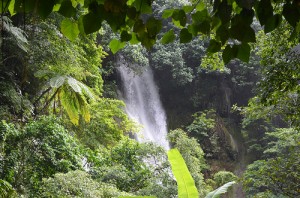Autumn 1969, the Niagara Falls verged on collapse.
So was the prediction made by the United States Engineering Corps. They believed that the constant rushing of the water was causing damage at the base of the cliff, destabilising the rock. Year on year retreat due to erosion was fine, but any major rock collapse could cause damage to anywhere downstream. They needed to perform a geological survey of the cliff and perform what work was necessary. The Niagara Falls push 2800 metric tons of water over the edge every single second, somewhat of a problem.
They needed to get rid of the water, and the Army Corps of Engineering did exactly that. An operation of great scale and precision, they removed the water from the waterfall. It was rerouted through a newly cut riverbed which allowed the water to rejoin the river further down. For the first time in the history of the United States, they could see the dry cliffs, and the desiccated riverbed.
Six months passed, during which the engineers cleared debris and detritus from the cliff base and drilled some holes into the cliff to maintain a constant moisture level. For convenient viewing of the rock face they set up a walkway.
Swinging a mere 6 metres from the face the fascinating sight became an extra draw, bringing in an ever greater flow of tourists. They stared, perplexed and gormless, venturing out to the barren river bed beneath the fall. Pictures from that short time are limited, due to the lack of cameras, not the lack of images.
Six months finished, as did the engineering work. Content with the safety they finished adding some hydroelectric turbines at the base and then, they busted the dam. Water was let loose, and the falls regained their water.
Niagara Falls has kept with the flow to this day, the rush of water rarely dropping in the decades since. For the engineers, this was a total success, they changed a part of the world, and managed to avoid any massive detriment. Spectators of the world are the only ones to have missed out here, a brief blip in the many thousands of years of flow, a sight to perhaps never be seen again. A genuine short-term wonder of the world.
Further Reading


